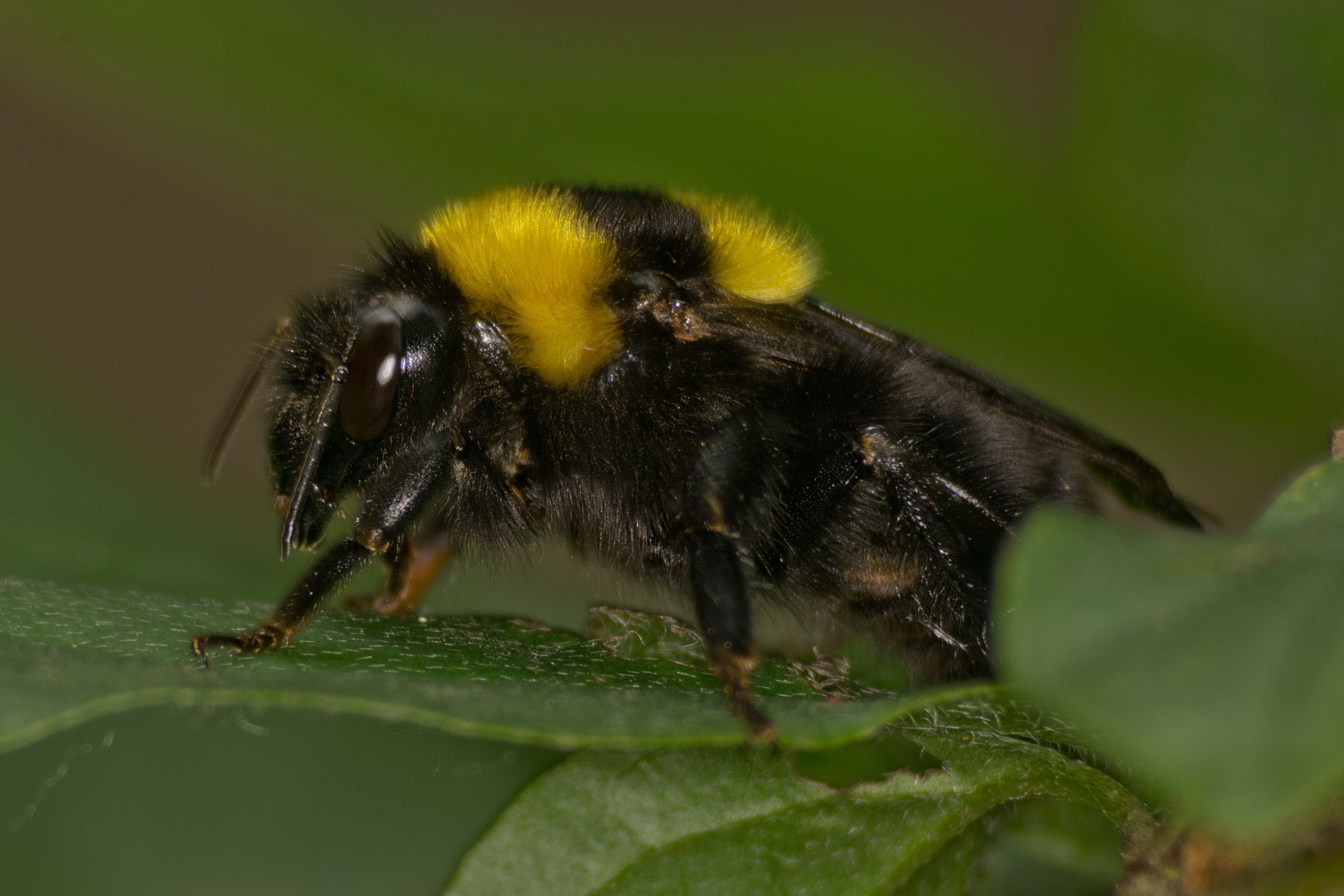Garden bumblebee
(Bombus hortorum)

Description
Bombus hortorum, the garden bumblebee or small garden bumblebee, is a species of bumblebee found in most of Europe north to 70°N, as well as parts of Asia and New Zealand. It is distinguished from most other bumblebees by its long tongue used for feeding on pollen in deep-flowered plants. Accordingly, this bumblebee mainly visits flowers with deep corollae, such as deadnettles, ground ivy, vetches, clovers, comfrey, foxglove, and thistles. They have a good visual memory, which aids them in navigating the territory close to their habitat and seeking out food sources. Bombus hortorum belongs to the Bombus, or bumblebee, genus. It is one of the six most common bumblebees throughout Europe. Of the six commonest species, only two are long-tongued: B. hortorum and B. pascuorum. Its close relative Bombus ruderatus also has a long tongue, but is much less common. Bombus hortorum and Bombus ruderatus are nearly identical in appearance, but DNA sequence data distinguishes them as clearly-separate species. This bumblebee has an oblong head and a very long tongue, about 15 mm (0.59 in), and in some cases even 20 mm (0.79 in). The tongue is so long that the bee often flies with it extended when collecting nectar. The queen is variable in size, with body lengths between 19 and 22 mm (0.75 and 0.87 in), and wing spans from 35 to 38 mm (1.4 to 1.5 in). The workers are almost as large, the larger ones overlapping the smaller queens. Their color is black with a yellow collar, a narrow yellow band on the scutellum, and a third yellow band on terga (abdominal segments) 1 and 2. The tail is white. Darker forms, with little yellow in their fur, are common. This species is found in Europe as far north as 70ºN (in Scandinavia, south of the tundra). In the west, its distribution reaches Iceland, where it probably has been introduced. In the south, it extends to the middle of the Iberian Peninsula, to southern Italy (Calabria), northern Turkey, and to the Mediterranean islands except Corsica, Sicily, and (probably) Sardinia. It continues in northern and central Asia through Siberia to the Altai Mountains, and, in the southeast, to northern Iran. In 1885, it was introduced in New Zealand, where it still exists, but without being particularly common. It is also found in America, particularly Florida. It is found through the British Isles, including Orkney and Shetland. Bombus hortorum are commonly found in grassland environments with abundant flowers that they can feed on.
Taxonomic tree:







